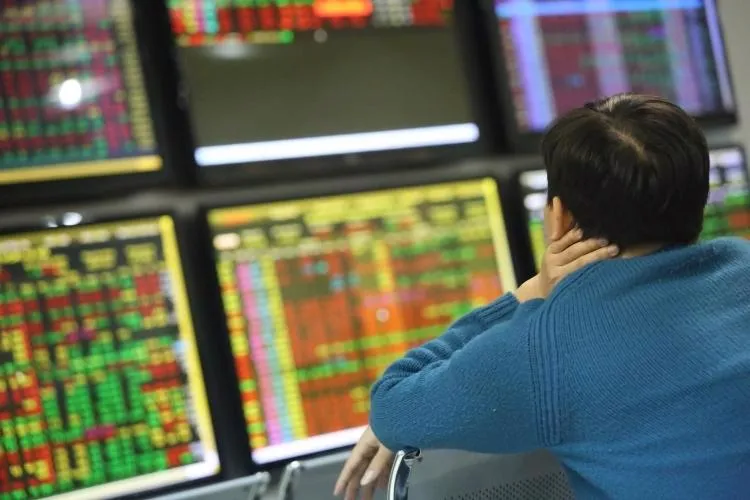
Statistics on the HoSE floor show that the historical peak in 2021 recorded a net selling amount of VND 58,052 billion by foreign capital. In 2023, as of mid-December, foreign investors have net sold around VND 20,783 billion, surpassing the 2020 record of -VND 15,741 billion.
Passive Funds Inflowing, Active Funds Withdrawing
Foreign capital inflows into the Vietnamese stock market are diverse, including individual investors, passive and active funds, not to mention various other forms of entrusted capital. Surprisingly, amid the strong net selling wave of foreign capital since the beginning of 2023, passive funds, such as ETFs, continue to experience inflows. According to FiinTrade's aggregated data, the foreign capital into ETFs over the first 11 months of 2023 still stands at VND 5,600 billion. This indicates that the significant net selling activities are occurring within other fund groups and investor categories.
Passive funds have gained prominence in recent years due to their low management costs, with a simple goal of tracking the movements of a representative index. In contrast, active funds bet on the manager's talent for performance. Comparing the investment efficiency between active and passive funds reveals that the talent of fund managers does not always guarantee success. However, the crucial aspect is the proactive nature of these funds, allowing them to flexibly adjust asset allocation and market exposure. Therefore, the normal practice of buying, selling, or adjusting exposure to certain stock markets is expected.
The Vietnamese stock market is currently witnessing a significant capital outflow from active funds. According to FiinTrade's statistics, over the past 11 months, active funds in the Vietnamese stock market have experienced a withdrawal of VND 20,700 billion. In November 2023 alone, active funds faced a withdrawal of over VND 4,300 billion. International reports also indicate a clear shift in capital flow from emerging markets to developed markets.
For instance, SSI Securities Company cites EPFR data, revealing that in November 2023, capital returned to developed equity markets, reaching USD 40.3 billion, after experiencing a net withdrawal of approximately USD 9.8 billion in October. The focus was primarily on the US market (USD 46.6 billion – the highest in 11 months). The Federal Reserve's decision to halt interest rate hikes and the possibility of reducing interest rates in 2024 have made the US stock market more attractive. Even in October 2023, when equity funds withdrew from emerging markets, US equity funds still attracted USD 2.7 billion. The market growth in the US from November to the present has been quite robust, with the S&P500 index rising nearly 13%, reaching a total increase of over 21% since the beginning of 2023. In comparison, the corresponding increase in the VN-Index is only 8.3% and 10.6%.
The reason for the perceived unattractiveness of the Vietnamese stock market compared to other markets leading to a reverse capital flow, at least for the time being, is the composite P/E ratio of the VN-Index, which currently stands at around 13.9 times (according to FiinTrade data or Bloomberg data, after excluding abnormal profits, it may be over 15 times). This is no longer attractive as the growth rate of EPS has slowed down. Even when disaggregating by industry groups, FiinTrade's view is more pessimistic, suggesting that if excluding two low P/E industry groups, namely banking and real estate, the P/E of the Vietnamese market could be over 23 times. Additionally, other notable factors include the significant slowdown in economic growth in 2023 compared to the initial forecast at the beginning of the year, and the after-tax profits of listed companies declining in the first three quarters of the year. FiinTrade estimates that the overall after-tax profits of the market in 2023 could decrease by 8.4%, more significant than the early-year forecast of 3% based on business plans of enterprises.
Foreign Capital Flows Could Make a Comeback
The significant net selling on the Vietnamese stock market in 2023 is closely tied to the depreciation of the domestic currency. While not the sole cause, it is a fact that many investment funds reported losses due to exchange rate fluctuations in the second and third quarters of this year. By the late period of the year (from October onwards), the exchange rate stabilized, but foreign investors continued significant net selling, totaling around VND 12,500 billion. If the capital flow dynamics of active funds are shifting, the situation may only ease as we transition into 2024.
The outflow of about USD 1 billion from the market is not a massive figure, especially when offset by the inflow of ETF capital. However, the impact of ETF capital inflow will become more apparent if the Vietnamese stock market signals strong opportunities for an upgrade. Recent regulatory moves demonstrate significant efforts to amend policies to meet the standards for upgrading to a new emerging market status. In the September 2023 assessment, FTSE Russel kept Vietnam on the watchlist for potential promotion to a Secondary Emerging Market.
On the flip side, substantial foreign net selling does not necessarily imply a market downturn. The daily foreign capital trading ratio on the market has dropped below 10%, but domestic investor capital inflow has strengthened. The phenomenon of international capital flows shifting is normal. In 2020 and 2021, the shift of capital flows to developed markets did not significantly impact the domestic market. As the market expands, the impact of external capital flows diminishes. Moreover, this shifting trend is not unidirectional, and when opportunities become clearer, active capital flows may reverse direction.




















